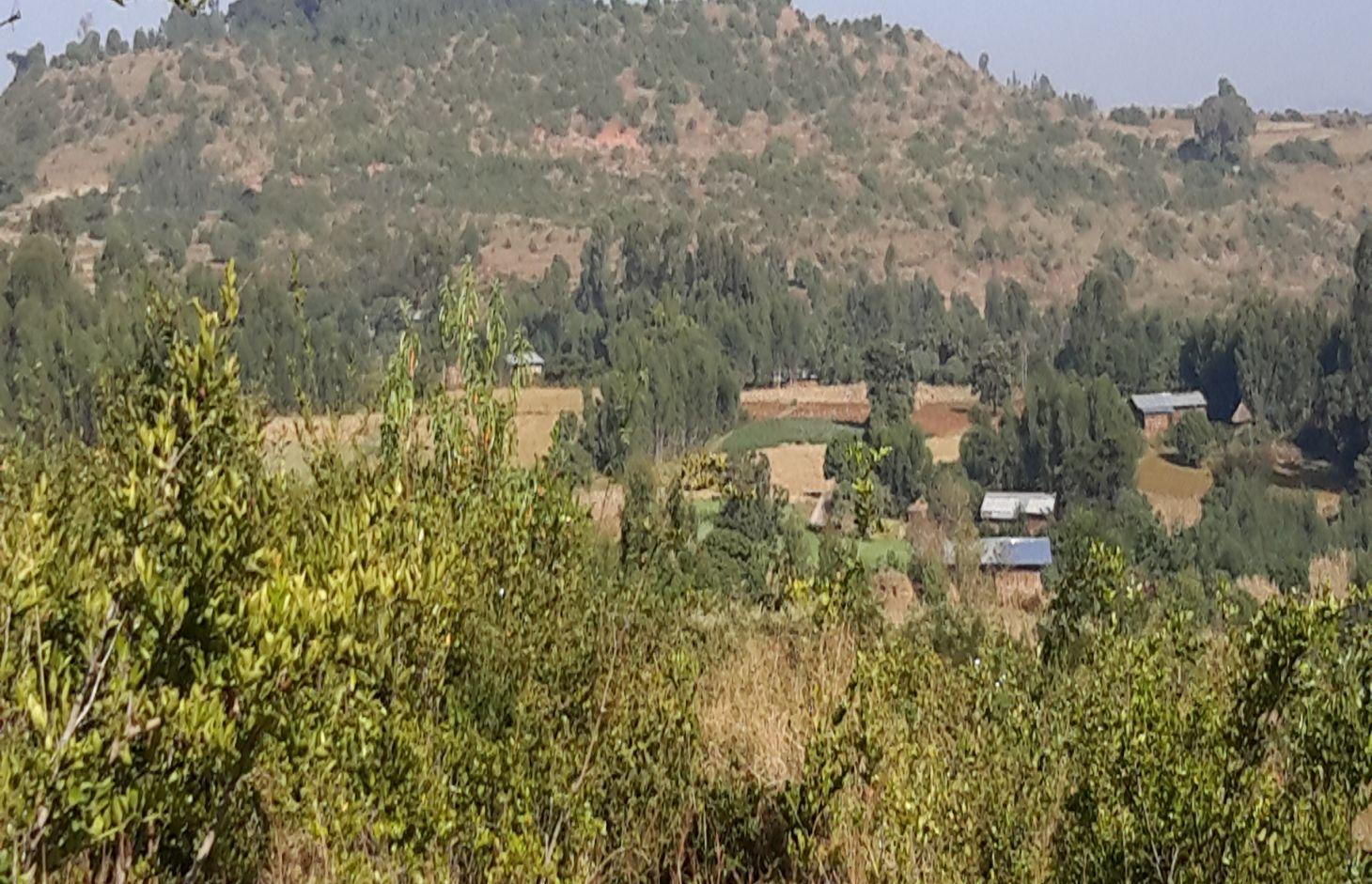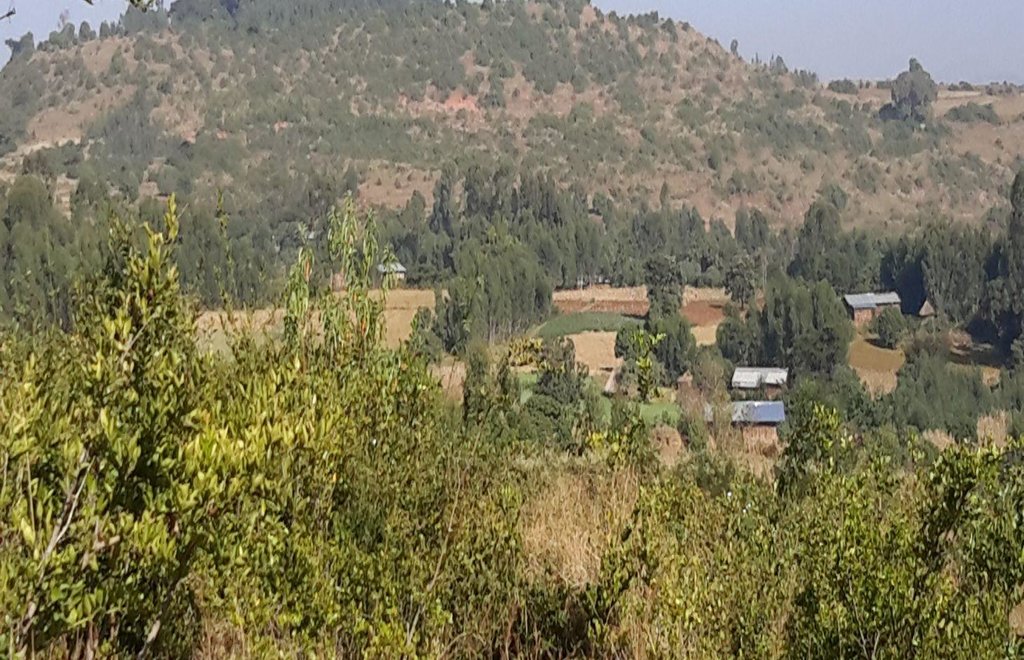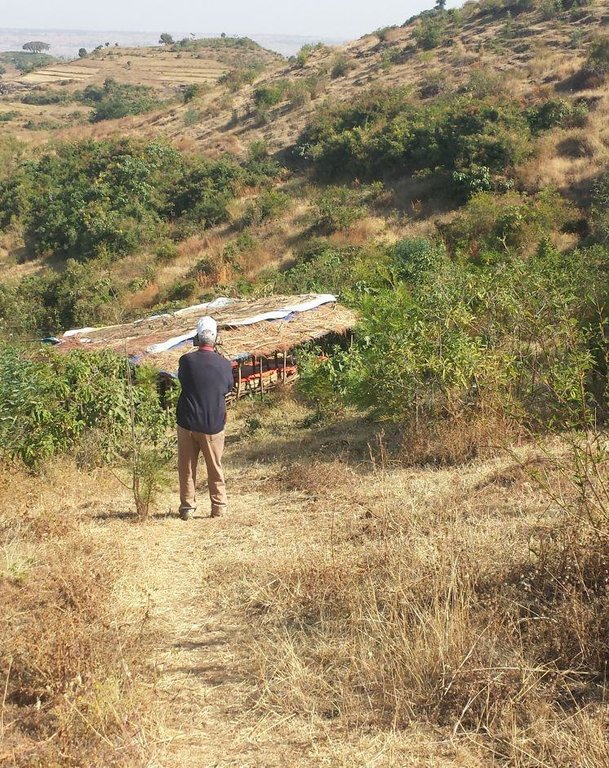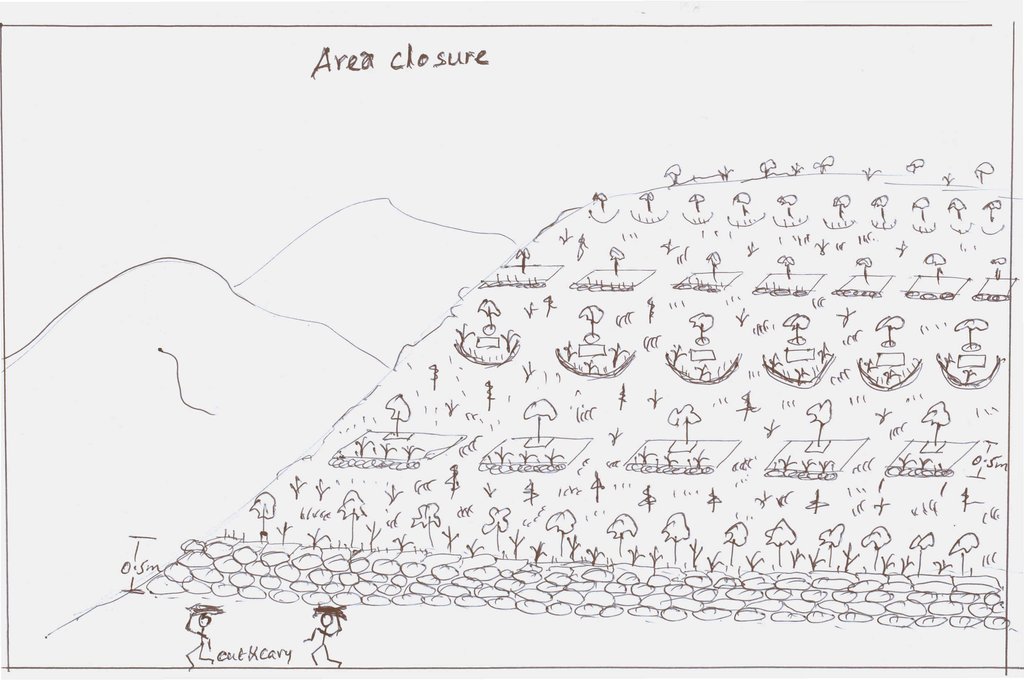Area closure on degraded lands [Etiópia]
- Criação:
- Atualização:
- Compilador/a: Gizaw Desta Gessesse
- Editor: –
- Revisores: Deborah Niggli, Alexandra Gavilano
Yetrakot Meret mekelel (Amharic)
technologies_1598 - Etiópia
Veja as seções
Expandir tudo Recolher tudo1. Informação geral
1.2 Detalhes do contato das pessoas capacitadas e instituições envolvidas na avaliação e documentação da tecnologia
Especialista em GST:
Bekure Melese
WLRC
Etiópia
Nome do projeto que facilitou a documentação/avaliação da Tecnologia (se relevante)
Water and Land Resource Centre Project (WLRC)1.3 Condições em relação ao uso da informação documentada através de WOCAT
O/a compilador/a e a(s) pessoa(s) capacitada(s) aceitam as condições relativas ao uso de dados documentados através da WOCAT:
Sim
1.4 Declaração de sustentabilidade da tecnologia descrita
A tecnologia descrita aqui é problemática em relação a degradação da terra de forma que não pode ser declarada uma tecnologia de gestão sustentável de terra?
Não
1.5 Referência ao(s) questionário(s) sobre abordagens GST (documentado(s) usando WOCAT)
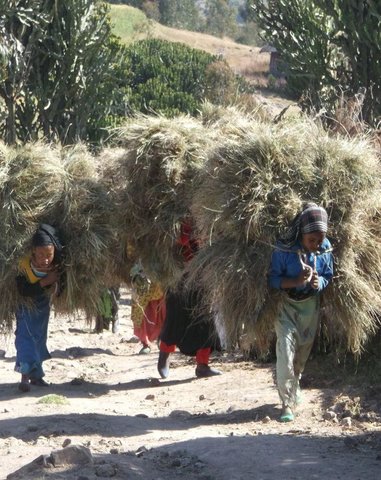
'Cut and Carry' Grazing system or 'Zero Grazing' … [Etiópia]
Cut and carry grazing system (alternatively called zero grazing) is an approach where the community is consulted to identify and agree on areas to be closed and protected from free grazing; establish user groups are established to share the fodder biomass harvested from communal closed areas equitably; they utilize tree/shrub …
- Compilador/a: Gizaw Desta Gessesse
2. Descrição da tecnologia de GST
2.1 Descrição curta da tecnologia
Definição da tecnologia:
Area closure on degraded lands is a land management practice used to rehabilitate and conserve the natural resource bases, and enhance its natural regeneration and restoring capacity and productive functions by excluding animal and human interferences through community consultation and collective actions.
2.2 Descrição detalhada da tecnologia
Descrição:
Area closure is a land management practice that helps to rehabilitate degraded lands, restore the biophysical conditions like soil, vegetation and hydrology by avoiding the interference of animals and human. Because of over grazing and erosion impact, areas delineated for closure are usually degraded shrub or pasture lands that served for grazing. First of all, implementing area closure requires continuous dialogue and discussion with community to reach consensus to close. The community wants to make sure they have benefited from the technology as the land was serving for grazing. They should take the responsibility and create sense of ownership to implement conservation measures, protect and maintain closure areas, and regulate utilization of benefits gained out of it. Questions raised from the community must be discussed thoroughly ahead of the implementation. What part of the degraded land? For what purpose the area is closed? Who are the users? Who are responsible to protect and manage the developed resourcess? How is the benefit sharing among identified users? Commonly, the shared benefits from area closures are hay for livestock through cut-and-carry system, timbers from plantations, and honey production.
Depending on the soil, rainfall and slope conditions different structural and vegetative measures are integrated to enhance the fast regeneration of plant species, restore the soil and increase water availability. It includes enrichment used to rehabilitate and increase the vegetation cover, vegetative and structural measures to retain the soil and water on its place. Structures such as hillside terrace often integrated with grass or shrub hedgerows is used to control soil erosion. In-situ water harvesting structures such as trenches or half moon or eye brow are used to harvest and infiltrate rain or runoff water to increase regeneration and survival of planted trees. Trees and/or shrub species that have high rehabilitation and multipurpose values are used as enrichment plantations. Closed areas need collective action to protect, maintain and manage the common resources. Collective user rights have to be entitled to bring equity on resource sharing and minimize social conflicts.
The purposes of area closure are: 1) rehabilitate degraded lands, 2) protect and restore the natural resource base, and 3) change into productive land and enhance economic and environmental functions of rehabilitated lands.
Implementation of area closure begins with the selection and demarcation of area through genuine participation of land users. After identifying the area to be closed, at establishment stage construction of ditches and terraces is made using stones combined with grasses or shrubs of multipurpose value such as Vetiver grass, Dinsho grass, Bana grass, susbania, etc. Depending on site conditions, enrichment tree species which have rehabilitation and soil restoration purposes are planted in the form of wood lot or scattered tree plantation. Among the common species, A. albida, A. saligna, A. decurrense, Gravilia robusta, etc. are used to rehabilitate and serve as fuel wood and timber. In moisture stress areas structures like trench, level bunds, and half moon should be constructed to increase survival rate of planted tree/shrub species whereas in areas having sufficient moisture these structures, depending on the landforms and soil drainage conditions, help to increase infiltration and recharging of ground water in downstream areas. Therefore, site selection and demarcation, construction of soil conservation and moisture conservation structures, and seedling management and plantation of multipurpose trees, shrubs and grasses are the activities accomplished at establishment stage of area closure. The required inputs are stones, seeds/seedlings, grass cuttings/splits, hand tools, and collective labor. For recurrent maintenance activities, seedlings and cuttings for re-plantation purpose or replace dead seedlings, stones to repair damage stone terraces and moisture conservation structures. Harvesting and transporting of area closure products such as grass and timber become a recurrent activity. Person days per hectare per year required for plantation (preparation of holes and planting) is 11.5, for harvesting and transporting harvested grass is 30, and for terrace construction is 26.5.
Area closure management is commonly practiced on degraded hills where soil is highly depleted, its water holding capacity is low, and vegetation is denuded. Usually degraded lands are used to serve for communal grazing system. The degree of land degradation becomes severe where there are high livestock and human population pressure. Management of closure area and the benefit sharing has to be regulated using agreed bylaws.
The living condition depends on subsistence crop-livestock mixed farming. On average households have 5-6 family size. Crop production is meant for home consumption with small surplus for local market. The services related to water supply, energy supply, and infrastructure are low. Besides it is an asset, animals often used to cope shocks during drought periods.
2.3 Fotos da tecnologia
2.5 País/região/locais onde a tecnologia foi aplicada e que estão cobertos nesta avaliação
País:
Etiópia
Região/Estado/Província:
Amhara National Regional State
Especificação adicional de localização:
Mecha / Yilmana Densa / Bahir Dar Zuria
Especifique a difusão da tecnologia:
- Uniformemente difundida numa área
Se a área precisa não for conhecida, indicar a área aproximada coberta:
- 1-10 km2
2.6 Data da implementação
Caso o ano exato seja desconhecido, indique a data aproximada:
- menos de 10 anos atrás (recentemente)
2.7 Introdução da tecnologia
Especifique como a tecnologia foi introduzida:
- através de projetos/intervenções externas
Comentários (tipos de projeto, etc.):
Area closure as an integrated SLM technology is practiced in recent years. However, the land users have their own traditional practice by closing grass lands or shrub lands during the rainy season.
3. Classificação da tecnologia de GST
3.1 Principal/principais finalidade(s) da tecnologia
- Preserva ecossistema
3.2 Tipo(s) atualizado(s) de uso da terra onde a tecnologia foi aplicada
Uso do solo misturado dentro da mesma unidade de terra:
Sim
Especificar o uso misto da terra (culturas/ pastoreio/ árvores):
- Agropecuária (incl. agricultura e pecuária)

Terra de cultivo
- Cultura perene (não lenhosa)
- Cultura de árvores e arbustos
- Vetiver grass, Dinsho grass, Bana grass, susbania
- A. albida, A. saligna, A. decurrense, Gravilia robusta, napier
Número de estações de cultivo por ano:
- 1
Especifique:
Longest growing period in days: 220, Longest growing period from month to month: May to December; Second longest growing period in days: 180, Second longest growing period from month to month: June to November

Pastagem
Pastagem extensiva:
- Pastoralismo semi-nômade
Pastagem intensiva/produção de forragem:
- Semiestabulação/sem pastagem

Floresta/bosques
Produtos e serviços:
- Madeira
- Lenha
- Pastagem/Alimentação de folhas e brotos
Comentários:
Livestock density (if relevant):
> 100 LU /km2
Major land use problems (compiler’s opinion): Land degradation due to different forms of soil erosion and nutrient depletion, excess removal of crop residues, excessive overgrazing, shortage of pasture lands and its low productivity, excessive and inappropriate construction of traditional ditches, and increased demand of trees for the purpose of fuel wood and timber.
Major land use problems (land users’ perception): Soil erosion and soil nutrient depletion, shortage of cultivated land, shortage of grazing land and wood for fuel wood
3.4 Abastecimento de água
Abastecimento de água para a terra na qual a tecnologia é aplicada:
- Precipitação natural
3.5 Grupo de GST ao qual pertence a tecnologia
- Reserva ( suspensão do uso, apoio à recuperação)
3.6 Medidas de GST contendo a tecnologia

Medidas vegetativas
- V1: cobertura de árvores/arbustos
- V2: gramíneas e plantas herbáceas perenes

Medidas estruturais
- S2: Barragens, bancos
- S3: Valas graduadas, canais, vias navegáveis
- S4: Valas de nível, fossos

Medidas de gestão
- M1: Mudança no tipo de uso da terra
- M2: Mudança de gestão/nível de intensidade
Comentários:
Type of vegetative measures: aligned: -contour, scattered / dispersed, in blocks
3.7 Principais tipos de degradação da terra abordados pela tecnologia

Erosão do solo pela água
- Wt: Perda do solo superficial/erosão de superfície
- Wo: efeitos de degradação externa

Deteriorização química do solo
- Cn: declínio de fertilidade e teor reduzido de matéria orgânica (não causado pela erosão)

Degradação biológica
- Bc: redução da cobertura vegetal
- Bh: perda dos habitats
Comentários:
Main causes of degradation: deforestation / removal of natural vegetation (incl. forest fires), overgrazing, population pressure, governance / institutional
Secondary causes of degradation: soil management, over-exploitation of vegetation for domestic use, Heavy / extreme rainfall (intensity/amounts), land tenure, education, access to knowledge and support services
3.8 Redução, prevenção ou recuperação da degradação do solo
Especifique o objetivo da tecnologia em relação a degradação da terra:
- Reduzir a degradação do solo
- Recuperar/reabilitar solo severamente degradado
4. Especificações técnicas, implementação de atividades, entradas e custos
4.1 Desenho técnico da tecnologia
Especificações técnicas (relacionada ao desenho técnico):
Integrated practices of area closure including hillside bunds, trenches, micro-basins, and trees/shrubs
Location: Debre Yacob Learning Watershed. Mecha/West Gojam/Amhara
Date: 2014-5-23
Technical knowledge required for field staff / advisors: moderate (Field staffs need to acquire technical knowledge on how to integrate different practices and strategies depending on the conditions and degree of degradation.)
Technical knowledge required for land users: low (Land users require low knowledge. Once they implement practices in the closure area, they are able to coordinate and respect the bylaws and equitable distribution of benefits.)
Main technical functions: control of raindrop splash, control of dispersed runoff: retain / trap, control of concentrated runoff: impede / retard, improvement of ground cover, increase of biomass (quantity)
Secondary technical functions: control of concentrated runoff: drain / divert, improvement of topsoil structure (compaction), increase in organic matter, increase / maintain water stored in soil
Aligned: -contour
Vegetative material: T : trees / shrubs, G : grass
Number of plants per (ha): 4000-6000
Spacing between rows / strips / blocks (m): 5
Vertical interval within rows / strips / blocks (m): 0.5-1.0
Width within rows / strips / blocks (m): 0.5
Scattered / dispersed
Vegetative material: T : trees / shrubs
Number of plants per (ha): 160
In blocks
Vegetative material: T : trees / shrubs
Spacing between rows / strips / blocks (m): 2
Vertical interval within rows / strips / blocks (m): 2
Trees/ shrubs species: Gravilia, Susbania, Acacia decurrence
Grass species: Napier
Slope (which determines the spacing indicated above): 20-30%
Gradient along the rows / strips: 0.5%
Diversion ditch/ drainage
Depth of ditches/pits/dams (m): 0.3-0.7
Width of ditches/pits/dams (m): 1.2-2.8
Length of ditches/pits/dams (m): 100-250
Waterway
Depth of ditches/pits/dams (m): 0.3
Width of ditches/pits/dams (m): 1.5-2.0
Bund/ bank: level
Spacing between structures (m): 5
Height of bunds/banks/others (m): 0.5
Width of bunds/banks/others (m): 1-1.5
Slope (which determines the spacing indicated above): 15-35%
Vegetation is used for stabilisation of structures.
Change of land use type: Initially, the land is highly degraded and waste land. After an increase in vegetation cover and biomass, its use is thus changed from waste/shrub land/open grazing to cut-and-carry grazing system
Change of land use practices / intensity level: The land use management is changed from open access /communal grazing or shrub land to regulated or organized form of land use management
Autor:
Bekure Melese, WLRC
4.2 Informação geral em relação ao cálculo de entradas e custos
Outro/moeda nacional (especifique):
ETB
Se for relevante, indique a taxa de câmbio do USD para moeda local (por exemplo, 1 USD = 79,9 Real): 1 USD =:
20,0
Indique a média salarial da mão-de-obra contratada por dia:
2.50
4.3 Atividades de implantação
| Atividade | Periodicidade (estação do ano) | |
|---|---|---|
| 1. | Preparation of seedlings | March-May |
| 2. | Transporting seedlings | July |
| 3. | Transporting grass splits | July |
| 4. | Sowing seeds on bunds | July |
| 5. | Planting of trees and shrubs | July |
| 6. | Planting of grass splits or cuttings | July |
| 7. | Construction of bunds or terraces | February-April |
| 8. | Construction of cutoff drains and ditches | Fegruary-April |
| 9. | Construction of waterways | February-April |
| 10. | Surveying or layout of structures | January-March |
| 11. | Consultation of the community | |
| 12. | Establish bylaws to control free grazing | |
| 13. | Establish user groups and arrange equitable benefit sharing |
4.4 Custos e entradas necessárias para a implantação
| Especifique a entrada | Unidade | Quantidade | Custos por unidade | Custos totais por entrada | % dos custos arcados pelos usuários da terra | |
|---|---|---|---|---|---|---|
| Mão-de-obra | labour | ha | 1,0 | 1766,0 | 1766,0 | 80,0 |
| Equipamento | tools | ha | 1,0 | 300,6 | 300,6 | 50,0 |
| Material vegetal | seedlings | ha | 1,0 | 405,6 | 405,6 | 100,0 |
| Material vegetal | seeds | ha | 1,0 | 20,0 | 20,0 | 100,0 |
| Material de construção | stone | ha | 1,0 | 1300,0 | 1300,0 | 100,0 |
| Custos totais para a implantação da tecnologia | 3792,2 | |||||
| Custos totais para o estabelecimento da Tecnologia em USD | 189,61 | |||||
Comentários:
Duration of establishment phase: 15 month(s)
4.5 Atividades recorrentes/manutenção
| Atividade | Periodicidade/frequência | |
|---|---|---|
| 1. | Preparation of seedlings | March-May |
| 2. | Seedling transportation | July |
| 3. | Grass split transportation | July |
| 4. | Planting seedlings | July |
| 5. | Planting grass splits | July |
| 6. | Maintenance of bunds / cutoff drains | |
| 7. | Enforcing bylaws | Throught the year |
| 8. | Benefit sharing among user groups | Throughout the year |
4.6 Custos e entradas necessárias pata a manutenção/atividades recorrentes (por ano)
| Especifique a entrada | Unidade | Quantidade | Custos por unidade | Custos totais por entrada | % dos custos arcados pelos usuários da terra | |
|---|---|---|---|---|---|---|
| Mão-de-obra | labour | ha | 1,0 | 624,0 | 624,0 | 29,0 |
| Material vegetal | seedlings | ha | 1,0 | 250,0 | 250,0 | 100,0 |
| Custos totais para a manutenção da tecnologia | 874,0 | |||||
| Custos totais de manutenção da Tecnologia em USD | 43,7 | |||||
Comentários:
Machinery/ tools: Spade, pickaxe, crowbar,
4.7 Fatores mais importantes que afetam os custos
Descreva os fatores mais determinantes que afetam os custos:
The costs of area closure affected by the labour availability, regeneration capacity of trees on the degraded lands
5. Ambiente natural e humano
5.1 Clima
Precipitação pluviométrica anual
- <250 mm
- 251-500 mm
- 501-750 mm
- 751-1.000 mm
- 1.001-1.500 mm
- 1.501-2.000 mm
- 2.001-3.000 mm
- 3.001-4.000 mm
- > 4.000 mm
Zona agroclimática
- Subúmido
Thermal climate class: subtropics
5.2 Topografia
Declividade média:
- Plano (0-2%)
- Suave ondulado (3-5%)
- Ondulado (6-10%)
- Moderadamente ondulado (11-15%)
- Forte ondulado (16-30%)
- Montanhoso (31-60%)
- Escarpado (>60%)
Formas de relevo:
- Planalto/planície
- Cumes
- Encosta de serra
- Encosta de morro
- Sopés
- Fundos de vale
Zona de altitude:
- 0-100 m s.n.m.
- 101-500 m s.n.m.
- 501-1.000 m s.n.m.
- 1.001-1.500 m s.n.m.
- 1.501-2.000 m s.n.m.
- 2.001-2.500 m s.n.m.
- 2.501-3.000 m s.n.m.
- 3.001-4.000 m s.n.m.
- > 4.000 m s.n.m.
5.3 Solos
Profundidade do solo em média:
- Muito raso (0-20 cm)
- Raso (21-50 cm)
- Moderadamente profundo (51-80 cm)
- Profundo (81-120 cm)
- Muito profundo (>120 cm)
Textura do solo (solo superficial):
- Médio (limoso, siltoso)
- Fino/pesado (argila)
Matéria orgânica do solo superficial:
- Baixo (<1%)
5.4 Disponibilidade e qualidade de água
Lençol freático:
> 50 m
Disponibilidade de água de superfície:
Médio
Qualidade da água (não tratada):
Água potável precária (tratamento necessário)
5.5 Biodiversidade
Diversidade de espécies:
- Baixo
5.6 Características dos usuários da terra que utilizam a tecnologia
Orientação de mercado do sistema de produção:
- Subsistência (autoabastecimento)
Rendimento não agrícola:
- Menos de 10% de toda renda
Nível relativo de riqueza:
- Pobre
- Média
Indivíduos ou grupos:
- Grupos/comunidade
Gênero:
- Mulheres
- Homens
Indique outras características relevantes dos usuários da terra:
Land users applying the Technology are mainly common / average land users
Difference in the involvement of women and men: Women has their own role in the establishment of the rea closure by collecting stones, support construction and planting activities. In addition they will harvest and transport fodder for livestock
Population density: 200-500 persons/km2
Annual population growth: 2% - 3%
80% of the land users are average wealthy.
20% of the land users are poor.
5.7 Área média de terrenos utilizados pelos usuários de terrenos que aplicam a Tecnologia
- < 0,5 ha
- 0,5-1 ha
- 1-2 ha
- 2-5 ha
- 5-15 ha
- 15-50 ha
- 50-100 ha
- 100-500 ha
- 500-1.000 ha
- 1.000-10.000 ha
- > 10.000 ha
É considerado pequena, média ou grande escala (referente ao contexto local)?
- Pequena escala
5.8 Propriedade de terra, direitos de uso da terra e de uso da água
Propriedade da terra:
- Estado
Direitos do uso da água:
- Acesso livre (não organizado)
- Comunitário (organizado)
5.9 Acesso a serviços e infraestrutura
Saúde:
- Pobre
- Moderado
- Bom
Educação:
- Pobre
- Moderado
- Bom
Assistência técnica:
- Pobre
- Moderado
- Bom
Emprego (p. ex. não agrícola):
- Pobre
- Moderado
- Bom
Mercados:
- Pobre
- Moderado
- Bom
Energia:
- Pobre
- Moderado
- Bom
Vias e transporte:
- Pobre
- Moderado
- Bom
Água potável e saneamento:
- Pobre
- Moderado
- Bom
Serviços financeiros:
- Pobre
- Moderado
- Bom
6. Impactos e declarações finais
6.1 Impactos no local mostrados pela tecnologia
Impactos socioeconômicos
Produção
Produção de forragens
Comentários/especificar:
Mainly serve for grass harvest
Produção animal
Comentários/especificar:
Cut and carry improve the production
Área de produção
Comentários/especificar:
By improving the land use management, production area for pasture increased
Renda e custos
Diversidade de fontes de rendimento
Comentários/especificar:
People try to diverse apiculture production in closed areas
Carga de trabalho
Comentários/especificar:
Labor requirement to harvest and transport fodder and pasture increase
Impactos socioculturais
Instituições comunitárias
Comentários/especificar:
Establishment of user groups and watershed users association
Conhecimento de GST/ degradação da terra
Comentários/especificar:
Increase the level of awareness that area closure can shortly reverse land degradation
Atenuação de conflitos
Comentários/especificar:
Reduce conflict arise due to pasture shortage
Situação de grupos social e economicamente desfavorecidos
Comentários/especificar:
Some rural unemployed youths get employed in apiculture production and fruit production
contribution to human well-being
Comentários/especificar:
The livestock production is moderately improved due to increase in biomass/ pasture harvest
Impactos ecológicos
Ciclo hídrico/escoamento
Quantidade de água
Escoamento superficial
Lençol freático/aquífero
Solo
Umidade do solo
Cobertura do solo
Perda de solo
Biodiversidade: vegetação, animais
Biomassa/carbono acima do solo
Diversidade vegetal
Diversidade de habitat
Clima e redução de riscos de desastre
Risco de incêndio
6.2 Impactos externos mostrados pela tecnologia
Caudal confiável e estável em período seco
Quantidade anterior à GST:
End of Nov
Quantidade posterior à GST:
Mar-April
Comentários/especificar:
Because of high vegetation cover, the recharrging capacity improved resulting in prolonging the stream flow/baseflow
Cheias de jusante
Sedimentação a jusante
6.3 Exposição e sensibilidade da tecnologia às mudanças climáticas graduais e extremos/desastres relacionados ao clima (conforme o ponto de vista dos usuários da terra)
Extremos (desastres) relacionados ao clima
Desastres meteorológicos
| Como a tecnologia lida com isso? | |
|---|---|
| Temporal local | bem |
Desastres climatológicos
| Como a tecnologia lida com isso? | |
|---|---|
| Seca | bem |
Desastres hidrológicos
| Como a tecnologia lida com isso? | |
|---|---|
| Inundação geral (rio) | não bem |
6.4 Análise do custo-benefício
Como os benefícios se comparam aos custos de implantação (do ponto de vista dos usuários da terra)?
Retornos a curto prazo:
levemente positivo
Retornos a longo prazo:
positivo
Como os benefícios se comparam aos custos recorrentes/de manutenção(do ponto de vista dos usuários da terra)?
Retornos a curto prazo:
positivo
Retornos a longo prazo:
muito positivo
Comentários:
Short term economic benefits can be attained by harvesting forage biomass for livestock while in the long term downstream agricultural productivity can be improved as they witnessed the change in stream flows to be used for irrigation. This is very much pronounced in Aba Gerima watershed where farmers in the downstream get to access more water.
6.5 Adoção da tecnologia
Comentários:
The technology is implemented in group or at community level.
The spontaneous adoption of this technology is possible without integrating plantations of improved trees/shrubs and grasses
There is a moderate trend towards spontaneous adoption of the Technology
Adoption to area closure is increasing as it provides better pasture for livestock and benefit those who do not have power or for poor community groups
6.7 Pontos fortes/vantagens/oportunidades da tecnologia
| Pontos fortes/vantagens/oportunidades na visão do usuário da terra |
|---|
| Increase in vegetation cover and biomass production for livestock feed |
| Increase the duration and flow of streams |
| Decrease erosion |
| Decrease transmission of animal disease often a problem during open grazing system |
| Pontos fortes/vantagens/oportunidades na visão do/a compilador/a ou de outra pessoa capacitada |
|---|
| Increase the fodder and grass biomass production for livestock feed |
| Increase the regeneration of lost plant diversities |
| Create alternative livelihood options (off farm activities like honey production, timber, tree or fodder seed production) |
| Enhance the micro-climatic conditions and on-site vegetation cover, organic matter, and soil water holding capacity. In addition it improves off-site surface and subsurface water flows |
6.8 Pontos fracos, desvantagens/riscos da tecnologia e formas de superá-los
| Pontos fracos/desvantagens/riscos na visão do usuário da terra | Como eles podem ser superados? |
|---|---|
| Land users' perceived that implementation of the technology decreases open access to communal pasture lands to maximize their benefit | Awareness creation activities has to be provided |
| Shortage of labor to harvest and transport forages to feed animals | Cost effective technologies to prepare feed, handle and transport forage has to be introduced and adopted. It can be overcomed by organizing service provider groups. |
| The amount of pasture/fodder produced and shared among users is much less than the feed requirement of all animals hold by a household | Introduce fodder species producing high biomass and high quality fodder; decrease livestock number per household. |
| Pontos fracos/vantagens/riscos na visão do/a compilador/a ou de outra pessoa capacitada | Como eles podem ser superados? |
|---|---|
| Labor constraint for cut-and -carry for stall feeding | It can be sustained through organizing service providers groups |
| Stall feeding restricted the cross breeding of animals in the village easily accessible during open grazing | Artificial insemination and bull services and synchronization breeding system has to be promoted |
7. Referências e links
7.1 Métodos/fontes de informação
- visitas de campo, pesquisas de campo
- entrevistas com usuários de terras
7.2 Referências às publicações disponíveis
Título, autor, ano, ISBN:
Sustaining the win-win benefits of improved grazing land management in EthiopiaPost written by Wolde Mekuria, WLE. March 30, 2015
Disponível de onde? Custos?
WLE post
Título, autor, ano, ISBN:
http://www.bioone.org/doi/pdf/10.1659/0276-4741(2005)025%5B0044%3ATROCIC%5D2.0.CO%3B2
Título, autor, ano, ISBN:
Vegetation Improvement in Communal Closed Areas in Tigray, Ethiopia.Sarah Tewolde-Berhan 1,4, Ralph Mitlöhner 2, Bart Muys3 , and Mitiku Haile 4
Título, autor, ano, ISBN:
Natural Regeneration Practice in Degraded High Lands of Ethiopia Through Area Enclosure Wondie Mebrat, Department of Biology, Adigrat University, Adigrat, Tigray, Ethiopia, 2015
Título, autor, ano, ISBN:
Area Closure: Rehabilitation of Degraded Lands and Grasslands and its Multiple Benefits. WLRC Brief No. 2. June 2015
Disponível de onde? Custos?
www.wlrc-eth.org
Links e módulos
Expandir tudo Recolher tudoLinks

'Cut and Carry' Grazing system or 'Zero Grazing' … [Etiópia]
Cut and carry grazing system (alternatively called zero grazing) is an approach where the community is consulted to identify and agree on areas to be closed and protected from free grazing; establish user groups are established to share the fodder biomass harvested from communal closed areas equitably; they utilize tree/shrub …
- Compilador/a: Gizaw Desta Gessesse
Módulos
Não há módulos


